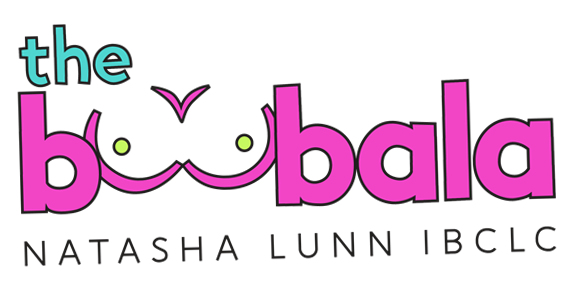Page Content
- What happens if I don’t breastfeed for 3 days?
- Will your breasts sag if you don’t breastfeed?
- How long do breasts leak when not breastfeeding?
- How to stop milk from coming in if not breastfeeding?
- How do I dry up breast milk asap?
- What’s the longest you can go without breastfeeding?
- What is the fastest way to dry up breast milk?
- What happens if you don’t breastfeed at all?
- What are the side effects of not being breastfed?
- How long until milk dries up if not breastfeeding?
Understanding Milk Drying Up Post-Breastfeeding
When a person decides to stop breastfeeding or pumping, the timeline for milk production to cease can vary significantly based on several factors, including hormonal changes and individual physiology. For those who are not breastfeeding at all, the process typically unfolds over a period of seven to ten days after delivery. During this time, the body gradually reduces prolactin levels, the hormone responsible for milk production, leading to a natural decline in milk supply.
Factors Influencing the Timeline
While the general timeframe is about a week to ten days, the duration can differ based on individual circumstances. For instance, if someone has been breastfeeding for an extended period, it may take weeks or even months for milk to completely dry up. This extended timeline is often influenced by how abruptly one stops breastfeeding or pumping. Gradual weaning tends to be more comfortable and can help mitigate the discomfort associated with sudden cessation.
In some cases, medical interventions may be employed to expedite the drying up process. Certain medications, such as decongestants, have been noted to assist in reducing milk supply more quickly. However, these should be used under the guidance of a healthcare professional to ensure safety and appropriateness.
The Experience of Drying Up
The experience of drying up can vary widely among individuals. Some may notice a gradual decrease in milk supply, while others might experience more abrupt changes. Physical symptoms can include engorgement, tenderness, or discomfort as the body adjusts to the absence of breastfeeding or pumping. To alleviate these symptoms, many find relief through methods such as wearing a supportive bra, applying cold compresses, or using over-the-counter pain relief.
Ultimately, the journey of drying up milk is a personal one, shaped by individual choices and biological responses. Understanding the typical timelines and factors involved can help individuals navigate this transition more comfortably and effectively.
What happens if I don’t breastfeed for 3 days?
Over time, your body will stop making milk if you don’t breastfeed or pump. This can take up to several weeks. You can take steps at home to decrease your discomfort and help your breasts stop making milk. Follow-up care is a key part of your treatment and safety.
Will your breasts sag if you don’t breastfeed?
The breasts of women who breastfed didn’t sag more than those who didn’t breastfeed—the sagging is caused by the changes related to the pregnancy, not the feeding. Instead, research shows the following factors can contribute to breast sagging: Genetics. Having large breasts.
How long do breasts leak when not breastfeeding?
It usually takes several weeks for your breasts to completely stop producing milk after you stop breastfeeding. Some women continue to produce milk up to 2 years after they have stopped breastfeeding. Contact your GP if you’ve stopped breastfeeding and: you’re still producing a lot of milk.
How to stop milk from coming in if not breastfeeding?
If you don’t plan to breastfeed, it’s best to avoid stimulation to your breasts — this may cause your body to release the hormones that stimulate continued breast milk production. Engorgement, leakage and discomfort tend to peak on the fourth postpartum day and gradually decrease over the next 10 to 12 days.
How do I dry up breast milk asap?
Tips for Drying Up Your Breast Milk
- Take acetaminophen (Tylenol) or ibuprofen.
- Put cold packs on your breasts.
- Use cold cabbage leaves (wash fresh cabbage and refrigerate; pull off one leaf at a time and lay them over your breasts; keep the leaves on your skin until they get soft).
What’s the longest you can go without breastfeeding?
As newborns get older, they’ll nurse less often, and may have a more predictable schedule. Some might feed every 90 minutes, whereas others might go 2–3 hours between feedings. Newborns should not go more than about 4 hours without feeding, even overnight.
What is the fastest way to dry up breast milk?
Drink one mug of sage or peppermint tea 3 or 4 times per day, for 2 to 3 days. Pseudoephedrine (Sudafed) can help dry up your milk, but ask your doctor before using this medicine, and do not take it if you have kidney or thyroid problems, or if you have glaucoma. Take Benadryl as directed on the package.
What happens if you don’t breastfeed at all?
Not breastfeeding or weaning prematurely is associated with health risks for mothers as well as for infants. Epidemiologic data suggest that women who do not breastfeed face higher risk of breast cancer and ovarian cancer, as well as obesity, type 2 diabetes, metabolic syndrome, and cardiovascular disease.
What are the side effects of not being breastfed?
Without breast milk, there’s a 30-200% increase in the chance of developing a chronic disease. There’s also an association with an uptick in infectious morbidity, including otitis media, gastroenteritis, and pneumonia, as well as higher risks of childhood obesity, type 1 and type 2 diabetes, leukemia, and SIDS.
How long until milk dries up if not breastfeeding?
Some people may stop producing milk over just a few days. For others, it may take several weeks for their milk to dry up completely. It’s also possible to experience let-down sensations or leaking for months after suppressing lactation. If your breast milk comes back in without any reason, talk with your medical team.

